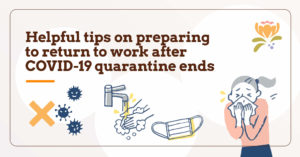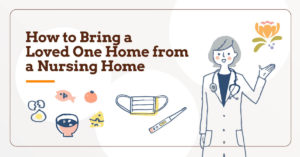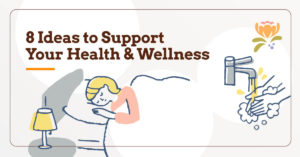 A missed step. A stumble. Or just a moment of lost balance can cause a person to fall. For older adults – those 65 and above – falls are a serious health risk. From bumps and bruises, to fractures, to brain injuries, the outcome from a fall can be devastating. Let’s explore caregiving and technology strategies to prevent falls.
A missed step. A stumble. Or just a moment of lost balance can cause a person to fall. For older adults – those 65 and above – falls are a serious health risk. From bumps and bruises, to fractures, to brain injuries, the outcome from a fall can be devastating. Let’s explore caregiving and technology strategies to prevent falls.
As people age, the preference is to continue living at home, to “age in place” as it is commonly referred. For many seniors, the thought of moving to an assisted living facility or nursing home is painful and unwanted. Home is usually a place of comfort, familiarity and family memories. But it can also be a source of additional fall risk factors.
Did you know that each year, 2.8 million older people are treated in emergency rooms for fall injuries?
source: CDC
As a caregiver, friend or family member, identifying and eliminating fall risk factors for your senior loved one are of utmost importance. This is a step that can enable aging in place for a longer period of time. Where do you start?
What Are the Most Common Fall Risk Factors?
Identifying risk factors is the first step. Professional research from the CDC has established many of the risk factors that contribute to falling, as listed below.
- Lower body muscle weakness
- Vitamin D deficiency
- Difficulties with walking and balance
- Medications, such as tranquilizers, sedatives, antidepressants, and even some over-the-counter medicines, can affect balance and how steady you are on your feet
- Vision problems, with and without glasses or contacts
- Foot pain or poor footwear
- Home hazards or dangers
- Bedroom located upstairs
- Broken or uneven steps
- Throw rugs or clutter that can be tripped over
For many senior adults, falls are caused by a combination of these risk factors. Obviously, the more risk factors a person has, the greater the chance of falling.
Preventing Falls
“Falls in the elderly are a serious health issue that can have a devastating impact,” says Ron D’Aquila, RN and co-owner of Assisted Living Services, Inc. “First and foremost when a senior is falling they need to be screened and evaluated by a physician to help determine the cause. There are numerous causative and contributing factors to falls; including medications, cardiac, drop in blood pressure, neurological, and musculoskeletal. After an evaluation, home care services can help become part of the solution to help reduce the risk and frequency of falls.”
Fall prevention, not reaction, is the best strategy.
If your senior is a fall risk the best thing that can be done is to hire a quality caregiver. Caregivers help prevent falls by monitoring the home environment and making sure that there are no “trip hazards,” such as wet floors in the kitchen, throw rugs, or items on the floor that can be an obstruction. Caregivers also manually assist the client around the home. Helping to ambulate the client to the bathroom or the kitchen can drastically reduce the chances of a fall.
Next, consider strength and balance exercises. This is also something to discuss with your senior’s physician. Many local community centers or fitness facilities offer group classes specifically for seniors. Not only will this type of activity help prevent falls, but will also help satisfy social and emotional needs through interaction with other adults.
The National Council on Aging (NCOA) suggests exercise programs that will strengthen muscles and improve balance. Specifically, Tai Chi is recommended. The NCOA describes Tai Chi: “The practice includes slow, low-impact and controlled movements and body positions. The movements improve the parts of your body needed for increased balance, strength, and flexibility, and the practice teaches you awareness.”
Schedule an eye exam every year. Vision changes so seniors need a professional eye exam to ensure their glasses or contact lenses are the appropriate prescription, as well as a check on overall eye health. Clear vision can help prevent falls.
Last but not least, a primary focus in preventing falls is home safety. Some simple home strategies can go a long way toward keeping your senior loved one safe at home. Everyday Health offers a great list of fall prevention tactics for the home.
- Clean up clutter. The easiest method for preventing falls is to keep your home neat and tidy. Remove all clutter, such as stacks of old newspapers and magazines, especially from hallways and staircases.
- Repair or remove tripping hazards. Sometimes home fixtures can contribute to falls, which can then lead to back pain and other injuries. Examine every room and hallway, looking for items such as loose carpet, slippery throw rugs, or wood floorboards that stick up. Then repair, remove, or replace those items for more effective fall prevention.
- Install grab bars and handrails. These safety devices are crucial for going up and down stairs, getting on and off the toilet, and stepping in and out of the bathtub without injuring yourself.
- Avoid wearing loose clothing. Baggy clothes can sometimes make you more likely to fall. Opt for better-fitting and properly hemmed clothing that doesn’t bunch up or drag on the ground.
- Light it right. Inadequate lighting is another major hazard. To create a home that’s more suitable for the elderly, install brighter light bulbs where needed, particularly in stairways and narrow hallways. Night-lights in bedrooms and bathrooms for better guidance at night are suggested.
- Wear shoes. Socks may be comfortable, but they present a slipping risk. Non-slip socks that have grips on the soles of the feet if shoes are too uncomfortable can be purchased.
- Make it nonslip. Bathtubs and showers, as well as floors in kitchens, bathrooms, and porches, can become extremely dangerous when wet. To prevent falls on slick surfaces, use nonslip mats.
- Live on one level. Even with precautions like guardrails, stairs can present a significant falling hazard. If possible, live on one level. If it’s not possible to live on one level, try to limit the trips you take up and down the stairs.
- Move more carefully. Many people fall at home by moving too quickly from a sitting to a standing position and vice versa. Preventing falls like this is as easy as taking your time.
The Role of Technology in Fall Prevention and Response
To help prevent falls Assisted Living Services’ and Assisted Living Technologies’ philosophy is to be proactive rather than reactive. “In addition to the traditional fall prevention strategies mentioned in this blog, we also suggest several technology solutions, such as bed pads and chair pads,” says Mario D’Aquila, Vice President of Assisted Living Technologies. “These sensor pads will send a signal to the caregivers’ pager when the senior attempts to stand up without asking for assistance. By utilizing this type of setup our caregiver can respond quickly to help the senior ambulate around the home with assistance to help avoid potential falls.” Learn more about our fall prevention technology on our website.
We hear frequently from our caregivers how the sensor pads have prevented a fall. To quantify those results, Assisted Living Technologies is running a 6-month study to determine the exact impact of technology on fall prevention. Stay tuned for the report!
Additionally, Assisted Living Technologies offers a wide variety of personal emergency response systems which can be used if a fall should occur. If a fall occurs when a caregiver is not in the home, the personal help button for emergency assistance can be utilized. A personal emergency response system allows the senior to get help as soon as possible.
If Your Senior Loved One Does Fall
According to the CDC more than one out of four seniors fall each year. Let’s hope he or she does not fall, but if it does happen what can you expect? Not all falls cause injuries. However, the CDC also reports that one out of five falls does cause a serious injury such as a broken bone or a head injury. If this happens, everyday activities, and possibly even living, alone will be difficult. Below is a list of what could happen when a senior falls, compiled by the CDC.
- Falls can cause broken bones, such as wrist, arm, ankle, and hip fractures. Mobility will be seriously impacted if a cast, crutches or walker is required.
- Falls can cause head injuries. Your senior loved one should see their doctor right away to make sure they don’t have a brain injury.
- Many people who fall, even if they’re not injured, become afraid of falling. This fear may cause a person to reduce everyday activities. When a person is less active, they become weaker and this increases their chances of falling. This can also lead to depression.
One out of five falls causes a serious injury such as broken bones or a head injury.
source: CDC
Assisted Living Services has a strict protocol in place if a fall occurs. Our caregivers call for emergency help, call our office managers, and if an injury is sustained, they call 911 immediately. Of course, a non-emergency visit to a physician may also be recommended.
Conclusion
Although the combination of technology and caregiving is a robust and reliable way to reduce the chances of falls in seniors, we must realize that there are many strategies to help reduce falls. Proper footwear, clean floors, and grab bars are all great ways to reduce falls as well. The professional care coordinators from Assisted Living Services specialize in designing a comprehensive care plan that works for your senior loved one. The care plan will include very useful tips on fall prevention that is customized to every one of our client’s homes.
To learn more, please visit our website or call our office at 203-634-8668.






3 Responses
You have shared a great information with us. Truly agreed with your thoughts about preventing falls. I would like to add some more ideas on this. Tools like a cane or a walker will help elders move comfortably while reducing the risk of falling.
Absolutely. Thank you for sharing.
great by all means, what an awesome post, thanks for sharing !
FALL PREVENTION TIPS FOR THE ELDERLY